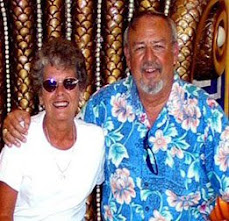We would car pool for the trip to Marco Island each day. About twice a week, when we drove through Naples, Fred Scott, an NPD cop, would pull us over. "Where you boy's say you were goin'?" he'd ask. Fred's cop's nose told him there was something about our Project Mercury story that stunk.
When I got in the cop business, Fred and I became good friends. He'd still ask me about the tracking station job but, he died before I was allowed to tell him the truth.
There were seven tracking stations like ours stretched from Eglin Air Force base to Key West. We all did track the Mercury capsule with our giant radars, locking on it when it cleared the coast of California and losing it in the mid-Atlantic. We also tracked the U-2 that secretly flew over Cuba, checking on what type of installations they were building. Like the ones that eventually led to the Cuban Missile Crisis.
But what we did most was called electronic counter-measures. This was new technology at the time and involved trying to avoid missiles that were trying to shoot down our missiles. And we're talking about missiles not carrying astronauts but nuclear warheads.
The company we worked for was called Vitro. But we really worked for the Air Force. Had to have a high-level secret clearance to work there.
The Air Force would launch a rocket from Eglin and we'd try to track it. It wasn't always possible, since the missiles had on-board electronics that put out signals to deceive any tracking radars. We'd usually end up tracking a ghost image while the missile went on it deadly way.
Actually, the missiles dropped harmlessly into the Gulf south of Key West. And the warheads were dummies.
The two radars we used for tracking were impressive. They put out a million watts, each. The computers that guided them were contained in fifty floor-to-ceiling cabinets. This was before transistors and glass diode tubes were used. Thousands of them. To make a repair, you got a schematic book-there were forty of them--found the likely cabinet, then the defective tube in the racks. Not easy. This early computer had less computing power than the little Radio Shack Color Computer I later owned.
So there it is, the Marco Mystery solved. If you even knew there was one.






No comments:
Post a Comment